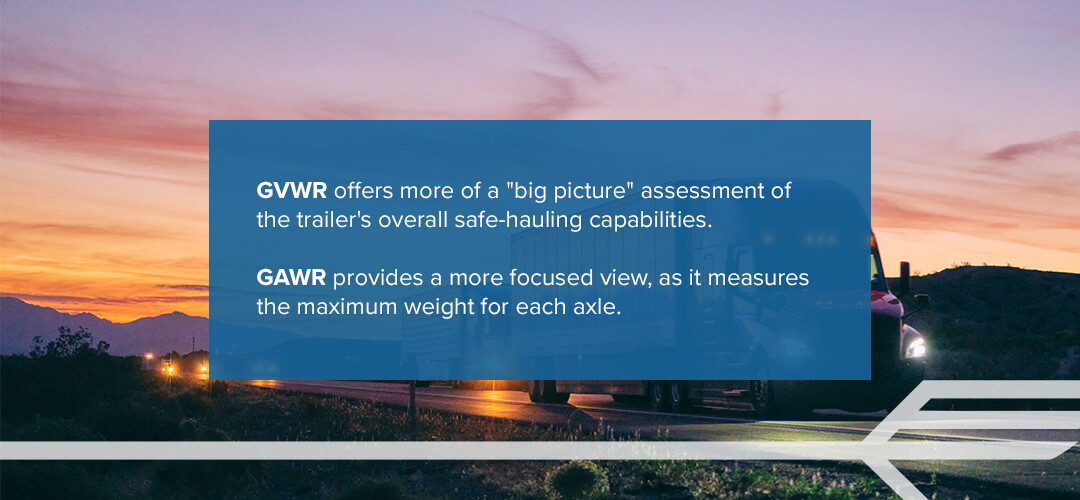If your business ships or hauls loads by truck, you must know the various weight restrictions impacting the transportation process. Overloaded trailers pose numerous issues that can jeopardize safety and result in costly noncompliance with increasingly stringent regulations.
The Federal Motor Carrier Safety Administration (FMSCA) is the government agency responsible for developing and implementing safety regulations for commercial motor vehicles in the U.S. The FMSCA has developed two methods for ensuring vehicles do not exceed predetermined weight limits — GVWR and GAWR.
What Is GVWR?
The gross vehicle weight rating (GVWR) is a value assigned by the manufacturer that indicates the highest allowable weight for a vehicle to operate safely when loaded. Two crucial factors are essential for determining GVWR:
- The curb weight, the weight of the vehicle and its standard equipment
- The weight of all optional features, as well as the weight of the operator and passengers
A GVWR calculation involves adding the trailer capacity, the maximum weight the trailer can hold and the trailer weight, which is the combined weight of everything the trailer is hauling.
What Is GAWR?
The gross axle weight rating (GAWR) refers to the maximum allowable weight an individual axle can handle as determined by the vehicle manufacturer. Knowing the GAWR is especially important when hauling loads with a vehicle with multiple axles. Since each axle typically has a different weight capacity, knowing the GAWR can help prevent an uneven load distribution.
Towing is a typical situation where knowing the GAWR matters. Ensuring the weight placed on the axle of the tow vehicle and trailer doesn’t exceed the GAWR for each reduces the risk of damage that could cause a serious accident.
Understanding the Difference Between GVWR and GAWR
While GVWR and GAWR are essential weight measurement tools, they provide different information about the vehicle. GVWR offers more of a “big picture” assessment of the trailer’s overall safe-hauling capabilities. It accounts for the vehicle’s weight with its standard equipment, contents, cargo and passengers.
GAWR provides a more focused view, as it measures the maximum weight for each axle. While the GVWR is constant for the entire vehicle, the GAWR can vary for each axle. The combined GAWR for all the axles should be close to or exceed the GVWR to ensure each axle can accommodate its share of the trailer’s weight.

Can a GVWR or GAWR Change?
Since a GAWR or a GVWR is carefully calculated by the manufacturer, changing these ratings is not a simple task. It’s important to evaluate the vehicle’s chassis to determine if it can accommodate the desired values. It’s also essential to pinpoint any required component or programming changes.
GVWR vs. GAWR: EMO Trans Has the Answers
EMO Trans has been providing customized global logistics solutions since 1965. We have the experience and expertise to resolve complex transportation and cargo challenges for small and medium-sized businesses across a broad spectrum of industries. Our goal is to establish enduring partnerships that enable us to provide the most effective and efficient supply chain services.
Delivering exceptional service is a daily focus at EMO Trans, which is why so many of our customers have been with us for decades. We will be responsive to your needs, whether you are transporting goods by ground, air or sea.
Contact us today to learn more about the differences between GVWR and GAWR and how they impact your company or request a no-obligation quote.
